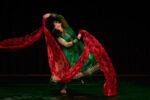Fiddler on the Roof – Review – Leeds Grand Theatre
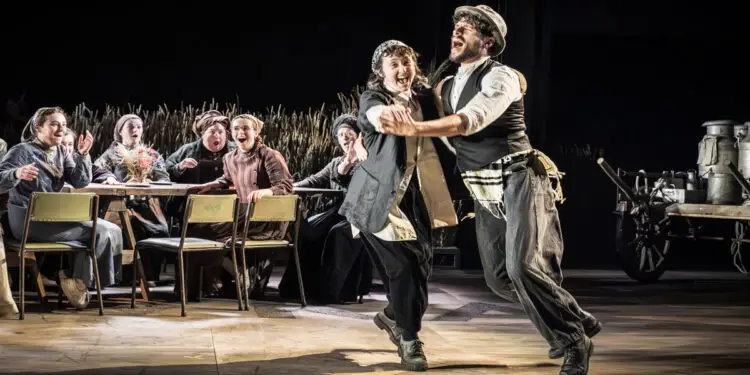
By Gail Schuster, July 2025
It’s easy to see why this theatre version of Fiddler on the Roof won three Oliviers, including the Best Musical Revival Award. It is a quality production from start to finish.
Fiddler on the Roof is based on a series of short stories by Sholem Rabinovitz also known as Shalom Aleichem, a prominent Yiddish author who lived in Russia. The show draws most directly from his stories about Tevye the Dairyman, written between 1895 and 1915.
The musical is set in the small Jewish village of Anatevka in Czarist Russia during the early 20th century. Tevye, is a poor but deeply devout milkman, who struggles to maintain his family and traditions in the face of sweeping social and political change. Tevye lives with his wife, Golde, and their five daughters. As the daughters come of age, they begin to challenge the conventional expectation of arranged marriages, choosing love over custom.
Tevye wrestles with these changes, trying to balance his deep faith and the love he has for his daughters. As tensions rise with increasing anti-Jewish sentiment from the Russian authorities, the villagers of Anatevka are eventually forced to leave their homes. This reflects the real-life pogroms and forced expulsions that many Jewish communities faced in the Russian Empire during the late 19th and early 20th centuries. The story ends with the families and community dispersing, each heading to an uncertain future.
“Surprising amount of humour”
Fiddler on the Roof continues to resonate with modern audiences because its themes, such as the struggle between tradition and change, the challenges of family and generational conflict, and the pressures of migration and displacement, remain universally relevant. Tevye’s efforts to balance faith, identity, and love in a rapidly changing world reflect tensions still felt today. The story’s blend of humour, humanity, and resilience in the face of hardship highlights the enduring power of culture and the strength of the human spirit, making it timeless and profoundly relatable.
The first song, ‘Tradition’, immediately introduces the audience to the central theme of the musical. As the song unfolds, the ensemble cast gradually join in, each group representing a different part of the community: fathers, mothers, sons and daughters. Each sing about their role and the expectations placed upon them, reinforcing the social structure and religious customs that define their lives. Visually, the stage is filled with bustling village life. The choreography is lively with strong folk influences.
Matthew Woodyatt is outstanding as Tevye, a demanding role which requires a delicate balance of warmth, comic timing and sincerity. His performance of ‘If I Were a Rich Man’ is a standout moment, rich with personality, humour, and longing, perfectly capturing Tevye’s dreams of a better life while subtly revealing the burdens he carries.
For a portrayal of a community struggling to continue their way of life there is a surprising amount of humour. After Tevye agrees to let Tzeitel, his eldest daughter, marry Motel, the poor tailor she loves, he must find a way to convince his wife Golde, who believes their daughter is to marry the wealthy butcher, Lazar Wolf. The resulting dream scene is very different in style to the rest of the show and has it roots in dark comedy, superstition, mysticism and surrealism.
“Funny and moving”
Tzeitel’s wedding scene features the heartfelt song ‘Sunrise Sunset’ in which Golde, Tevye and the guests reflect on the passage of time. This is followed by the iconic bottle dance at the reception, performed by a group of men balancing glass bottles on their hats while executing slow, precise, and intricate movements. This traditional Jewish folk dance, though stylised for the stage, is a dazzling moment of choreography and is a firm favourite of fans.
Tom Scutt won the Olivier Award for Best Set Design, which blends minimalism with symbolism. The edge of the stage has wheat growing round it to emphasise the rural setting. There is a platform above the stage which can be lowered and raised as needed. This also has wheat on it and at various times is the roof for the fiddler and the chuppa for Tzeitel’s wedding. The live orchestra is on stage, partially screened behind the wheat. There are no large set pieces to move and items such as Tevy’s cart are brought on at key moments to support the narrative.
The production has a strong cast including Raphael Papo who gives a wonderful performance as the enigmatic fiddler and who unsurprisingly was nominated for an Olivier Award for it. Jodie Jacobs brings authenticity to the role of the practical, pragmatic Golde and Beverley Klein as matchmaker Yente, is both funny and moving, providing an insight into the role of women and ageing in a traditional community.
Fiddler on the Roof doesn’t tour very often and this production is well worth going to see if you get the chance.
‘Fiddler on the Roof’ is at Leeds Grand Theatre until 2nd August
images: Marc Brenner
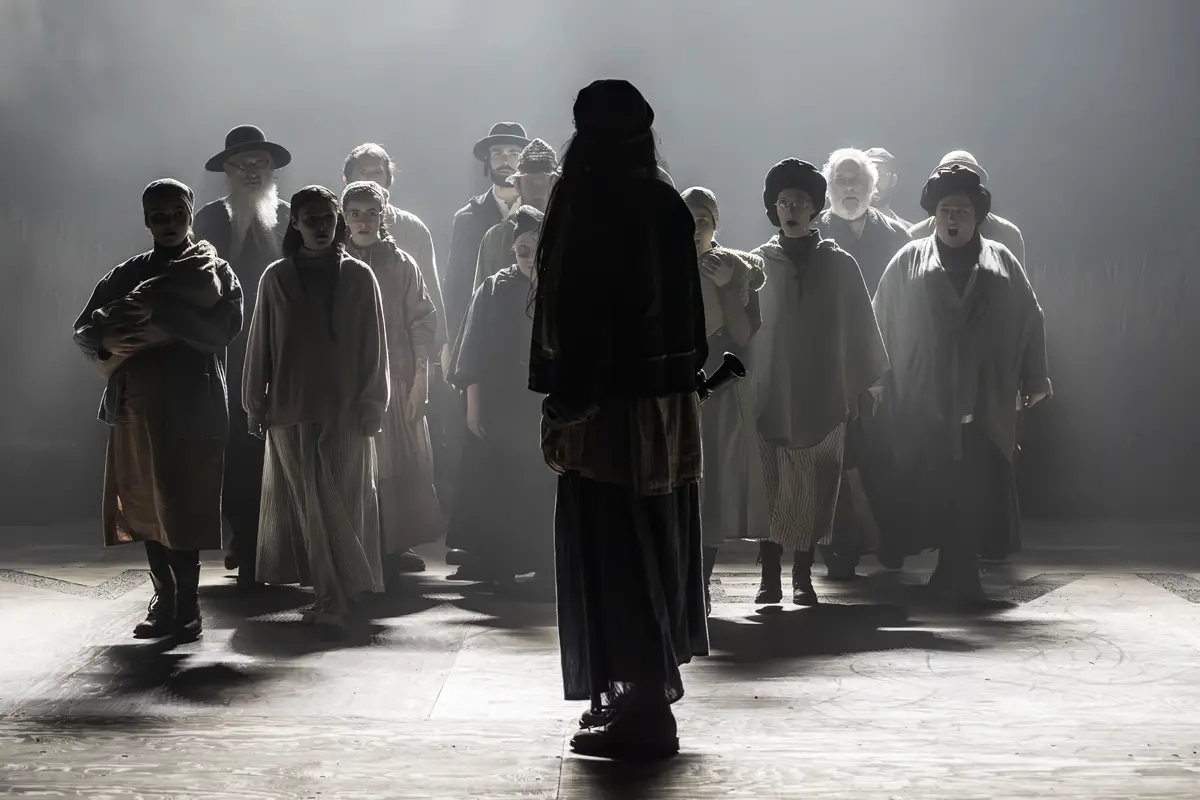

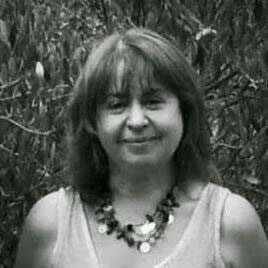
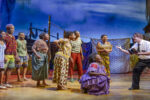

![La Bohème [Opera North] Review Leeds Grand Theatre (1)](https://www.on-magazine.co.uk/wp-content/uploads/La-Boheme-Opera-North-Review-Leeds-Grand-Theatre-1-150x100.jpg)






